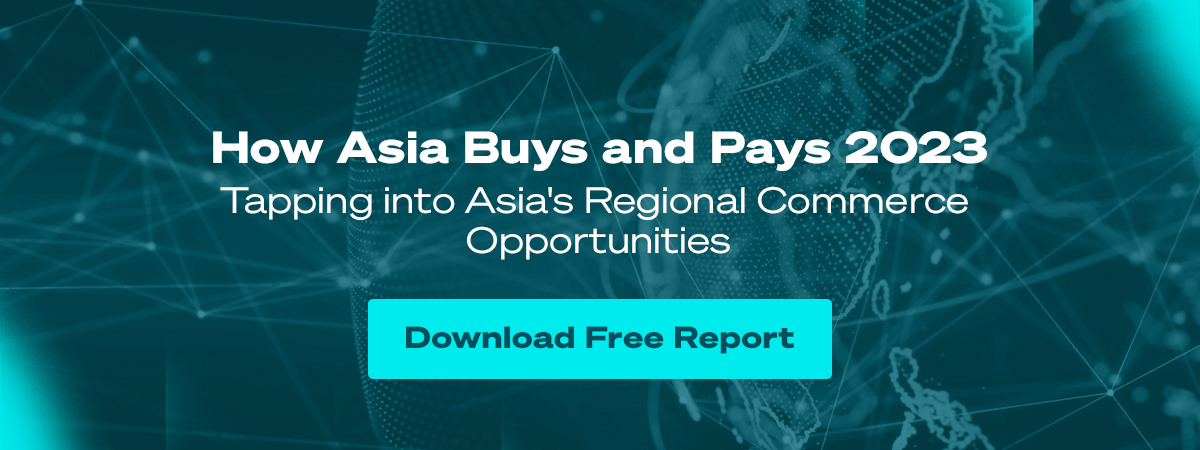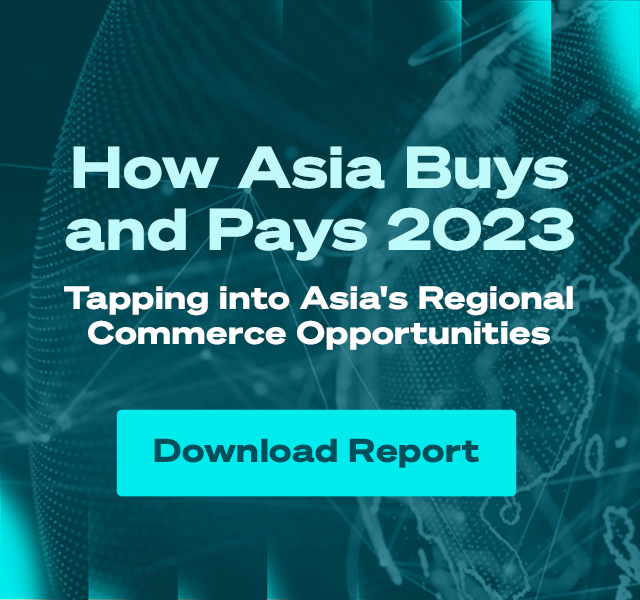
Payments Powerhouses: An Investor’s POV
Payments Powerhouses is a new monthly editorial series featuring trailblazers and leaders of the payments and wider fintech industry, in Southeast Asia and beyond. In the first instalment of this series, we speak with Dmitry Levit.
Dmitry is one of the partners at Cento Ventures, a Singapore-based venture capital firm focused on tech startups building transformative services on the back of Southeast Asia’s rapid digital transformation. He oversees all investment and fund activities in the region.
Prior to Cento Ventures, he gained experience in the emerging markets’ Internet economies, holding business development and investment roles in Yahoo and IDG Ventures.
Originally from Russia, Dmitry led Cento Ventures’ investment into 2C2P nearly ten years ago. He gave behind-the-scenes takes on how the partnership started, insights on identifying the right deals, and his views on Southeast Asia’s evolving payments ecosystem.
Hi, Dmitry! You’ve had an interesting career path from your marketing roots to advising corporations and finally founding Cento Ventures in 2011. How and why did you start Cento Ventures? And why Southeast Asia of all places?
Dmitry: History and the study of different cultures was my childhood passion. So I think that naturally translated to my first stint in marketing, where it was all about understanding consumers, their tastes, what they want, and how similar or different each consumer group is. Doing that across several geographies and industries got me interested in the various emerging markets of the world.

2007: A young(er) Dmitry just starting out
While studying for my MBA at INSEAD in Singapore, I was lucky to be hired by Yahoo. They arranged for a two-year educational joyride for me across Southeast Asia. I met local portals, talked to local telcos, and learned how the local consumption of media and digital services worked. I liked the market and saw some parallels with the digital economies I was already familiar with, especially ones in Russia and Eastern Europe. That led me to believe that if I started investing, I would have some useful foresight and a bit of an edge in Southeast Asia.
And that's how the original idea of setting up a VC firm in Southeast Asia came together. The plan was to figure out the playbook for building regional digital companies in Southeast Asia and then take it to other growth markets.
Who did you call to help get Cento Ventures started?
I teamed up with a few friends I’ve met over the years as co-investors and colleagues, who were brave enough to put their trust in this idea. Some came on board as initial investors, and some have become members of the team.
Since then, we have been backing transformative tech companies riding the wave of growth in Southeast Asia, selecting those with the ambition and business model to become regional or even global leaders in their category.
You’ve had rich experiences witnessing companies and countries go through digital transformation. How do you identify good founders and teams, especially at an early stage?
It all depends on the combination of the market opportunity, the personality of the founder, and their stage of life - everything needs to come together just right in order for a start-up to work successfully. So I would rephrase the question as identifying the right founder rather than a good founder.
There is nothing too scientific about this. We don’t have a set blueprint. It's mostly pattern recognition and it comes down to a fit with business opportunity. We review thousands of opportunities annually, and meet up with hundreds of founders. After the first meeting, we track prospective companies and teams, sometimes for years, some for close to a decade now. Applying the knowledge accumulated within our team, we constantly learn more about which combinations of opportunity and founder would work within the Southeast Asia context.

A few years into the Cento Ventures journey. Taken in 2014.
As for 2C2P, I met Aung on several occasions over the course of two years prior to our investment in 2012. He struck me as somebody who knows more about payments than I will ever learn in my life. He introduced me to the notion of card issuance, for instance, which caught my attention as I never quite understood the business models enabled by it. His insights about Southeast Asia’s payment market then also aligned with my observations, which was that cash is king - and alternative methods of payment acceptance beyond credit cards would be critical for the market.
At that time, there was a sizable payment service provider in Russia called Qiwi that went on to become a publicly listed company. Similar to 2C2P, Qiwi enabled large merchants to accept payments through traditional card-based methods and custom alternative channels that varied from region to region. There were several similar successful case studies in Western Europe as well.
Our team envisioned that the travel industry would be one of the first to drive the adoption of digital payments. Incidentally, 2C2P’s core strength was its understanding of the travel and airline industries. All these triggered some pattern recognition and that’s when our team got excited to partner with 2C2P. After 10 years of partnership, the rest is history!
How do you think payments and its evolution has enabled more digital economies in Southeast Asia?
Back in 2011, there were only a handful of payment acceptance players in Southeast Asia that enabled mid-sized merchants to accept card payments, not to mention rapidly growing alternative payment methods, across a very fragmented region. The travel industry and nascent daily deal industry drove the demand for their services.
As years went by, Aung’s insight about consumer demand for alternative payment systems beyond card acceptance in Southeast Asia came to pass - payment channels in formats as diverse as cash over-the-the-counter, direct bank transfers, agent networks, voucher and pin code distribution systems, direct carrier billing, and hundreds more popped up all over Southeast Asia. This made it easier for the region’s consumers to participate in the digital economy, but it also created dizzying complexity on the merchant’s side, who had to contend with dozens - soon, hundreds - of ways in which consumers wanted to transact with them.
Five years ago, Southeast Asia’s retail and local (urban) services such as taxi hailing and food delivery started digitising rapidly. This was powered by intensive investment from the first wave of European and Japanese investors, Rocket Internet and Mitsui most prominently, and later by an influx of capital from all over Asia - notably Softbank, but also strategics from China, and a lot of venture capital from the US by way of India. This generation of companies, known as O2O, e-commerce, and more recently, superapps, have given the region more than a dozen major digital transactional platforms and about a hundred smaller ones. All of them are permeated by digital payments in various formats.
In the last three to four years, we’ve started seeing banks, card schemes, and regulators engage closely with the topic of digital payments. Southeast Asia, interestingly, repeated neither the US nor China nor India’s trajectory in this regard. While the influence of all three ecosystems is visible in Southeast Asia’s payment landscape, the region is definitely forging its own unique path forward.
What are the challenges for payments today?
Southeast Asia is a region of great diversity. It presents a fractured and complex landscape that makes the collection and distribution of payments a challenge for any merchant.
Many Southeast Asian consumers are already living in a cashless payment world, often made possible by the wallets that are integrated into the aforementioned superapps. However, a dizzying diversity of methods are still necessary to top up and cash out from these wallets. 2C2P plays a key role in managing this behind-the-scenes complexity, and therefore helps the region’s digital economy function smoothly.
What stage is Southeast Asia at in terms of transformation? And how do you see it moving in the next 5-10 years?
It's always tough to say where things will be moving in 10 years, but I'll give you a snapshot of where Southeast Asia is at right now, based on the research we conduct at Cento Ventures on the amounts of investment that go to the various sectors in Southeast Asia - that is as good a proxy of digital transformation as any.
Value chains in Southeast Asia have received a significant and transformative amount of venture capital investment. That includes local services such as ride hailing and delivery services. These value chains make large cities in the region easier to live in, so that’s one sector we can expect to carry on growing in the near future.
Retail comes in a close second. This means your traditional brick-and-mortar stores are going digital. This has been going on since 2014. It’s a somewhat slow and painful process, but they will get there.
Around 2018, two value chains joined the party - logistics and payments. These two sectors have been attracting meaningful investments, especially the former. Lastly, the financial services industry’s digitisation has started to attract some capital – this includes banks, non-banking, financial institutions and insurance companies.
Southeast Asia’s value chains are embracing digitalisation. But the broader picture is that Southeast Asia is still quite a few steps behind more advanced economies like South Korea, Japan and parts of Europe, where there are already 30 to 40 value chains that have been significantly impacted by digital technologies.
Lastly, can you please share one piece of advice for founders today?
Do your own research. Try not to rely on what the word in the ecosystem is. More often than not, the actual reality on the ground diverges a fair bit from what the investor classes or the media buzz are about - Southeast Asia’s growth has been so impressive, you can expect folks like us investors to get carried away at times!
. . .
Payments Powerhouses is a monthly editorial series interviewing the movers and shakers of the payments and wider fintech industry, in Southeast Asia and beyond. If you’d like to be featured on Payments Powerhouses, reach out to us here.

